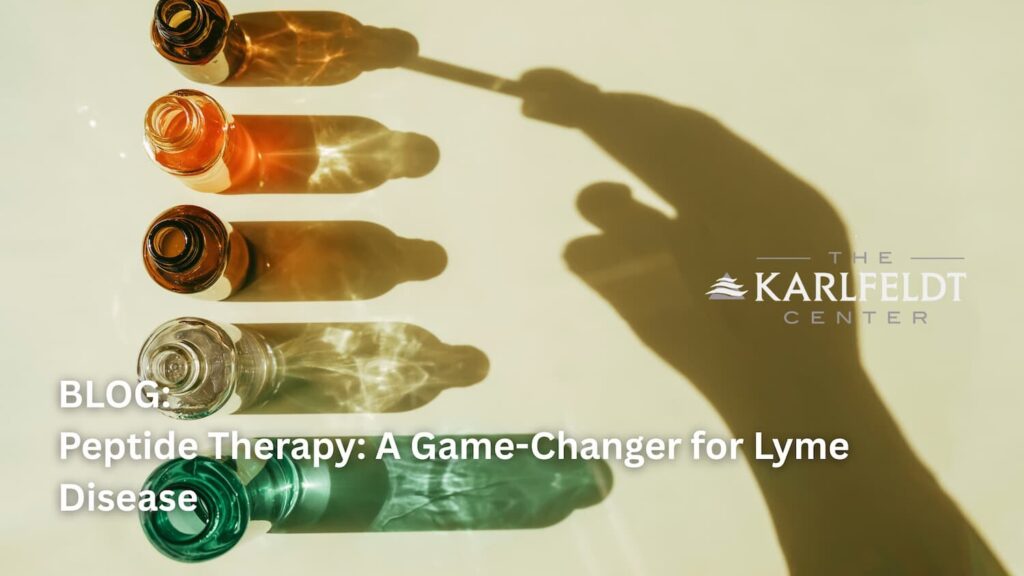
For chronic Lyme sufferers, the journey to healing often feels like a never-ending battle. The complex and multifaceted nature of Lyme disease, especially when it involves co-infections, requires more than just antibiotics. One of the most exciting emerging treatments for Lyme is peptide therapy. Peptides are short chains of amino acids that can perform targeted actions in the body, offering new ways to repair damage, boost immunity, and restore cellular function. In particular, peptides such as BPC-157, TB500, Thymosin Alpha-1 (TA1), KPV, LL-37, SS-31, and MOT-C are showing promise in addressing the root causes of Lyme and promoting recovery.
Healing with BPC-157 and TB500
BPC-157, often referred to as the “Swiss army knife of peptides,” has gained recognition for its ability to promote tissue repair, reduce inflammation, and improve gut health—essential for Lyme sufferers dealing with leaky gut and chronic inflammation. This peptide not only helps with the healing of joints, tendons, and muscles damaged by the disease but also supports mitochondrial function, helping restore energy levels. Similarly, TB500 (Thymosin Beta-4) aids in tissue repair, enhances recovery, and reduces inflammatory cytokines, which are typically elevated in chronic Lyme cases.
Supercharging the Immune System with Thymosin Alpha-1 and KPV
Thymosin Alpha-1 (TA1) is known for its immune-modulating effects, making it particularly useful for Lyme patients whose immune systems are often overwhelmed. TA1 enhances the production of T-cells and helps regulate immune responses, improving the body’s ability to fight Lyme and other infections. It also plays a role in reducing chronic inflammation, a hallmark of long-standing Lyme disease. KPV, another potent peptide, stabilizes mast cells and reduces inflammation while possessing antimicrobial properties, making it effective against co-infections and managing symptoms like fatigue and cognitive fog.
Targeting Bacteria with LL-37
LL-37 is a powerful antimicrobial peptide that targets Lyme-causing bacteria and co-infections like Babesia and Bartonella. It disrupts bacterial biofilms, which often shield these pathogens from antibiotics and the immune system, allowing for better treatment outcomes. For Lyme patients dealing with persistent infections, LL-37 offers a way to directly combat these resilient bacteria.
Restoring Mitochondrial Health with SS-31 and MOT-C
Mitochondrial dysfunction is a major issue for Lyme sufferers, leading to fatigue, muscle pain, and cognitive decline. SS-31 (Elamipretide) is a novel peptide that specifically targets mitochondrial damage. By binding to cardiolipin in the mitochondria, SS-31 restores energy production and reduces oxidative stress, which is often heightened in Lyme disease. It also prevents mitochondrial swelling and cell death, helping preserve cellular health and improving symptoms like fatigue and brain fog. MOT-C, another mitochondrial-targeted peptide, supports mitochondrial biogenesis, which is essential for restoring energy levels and muscle function in Lyme patients.
A Comprehensive Approach to Healing
Peptide therapy offers a revolutionary approach to treating Lyme disease by addressing key areas of dysfunction—immune dysregulation, inflammation, bacterial persistence, and mitochondrial damage. However, peptides should be used as part of a comprehensive treatment plan, including detoxification strategies and advanced testing for co-infections. At The Karlfeldt Center, we specialize in peptide therapy tailored to your specific needs, helping you regain your health and vitality.
If you’re ready to explore how peptide therapy can help you overcome Lyme disease, we offer a free 15-minute discovery call to discuss your options. Call us at 208-338-8902 or email info@thekarlfeldtcenter.com to start your healing journey today.
